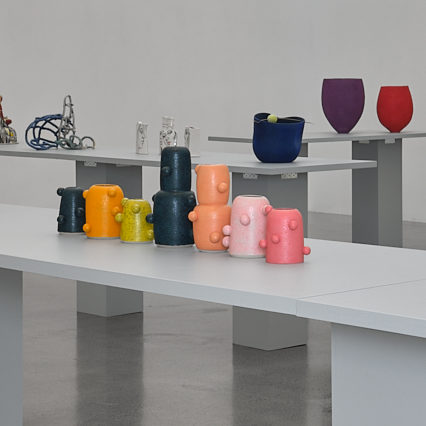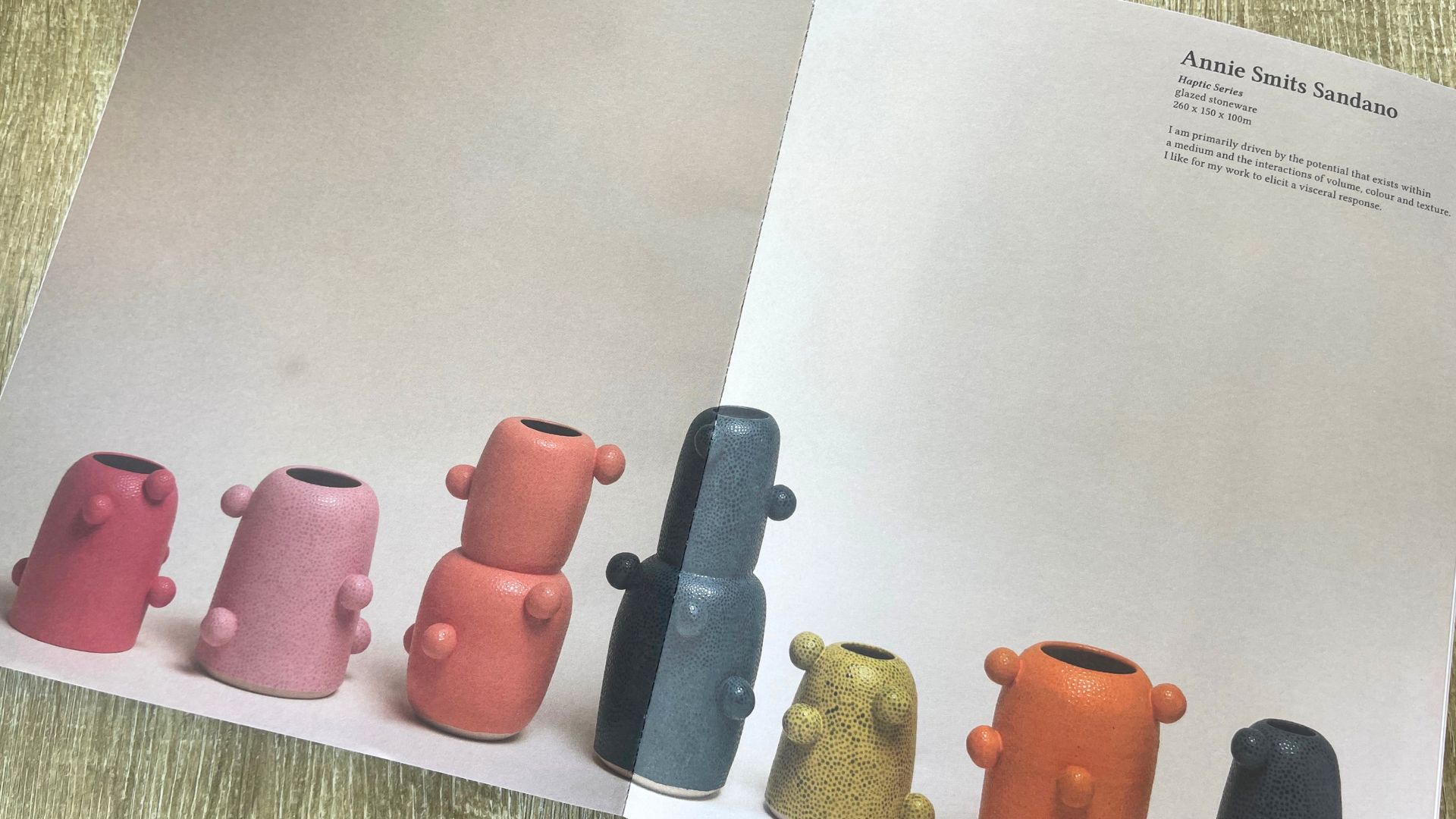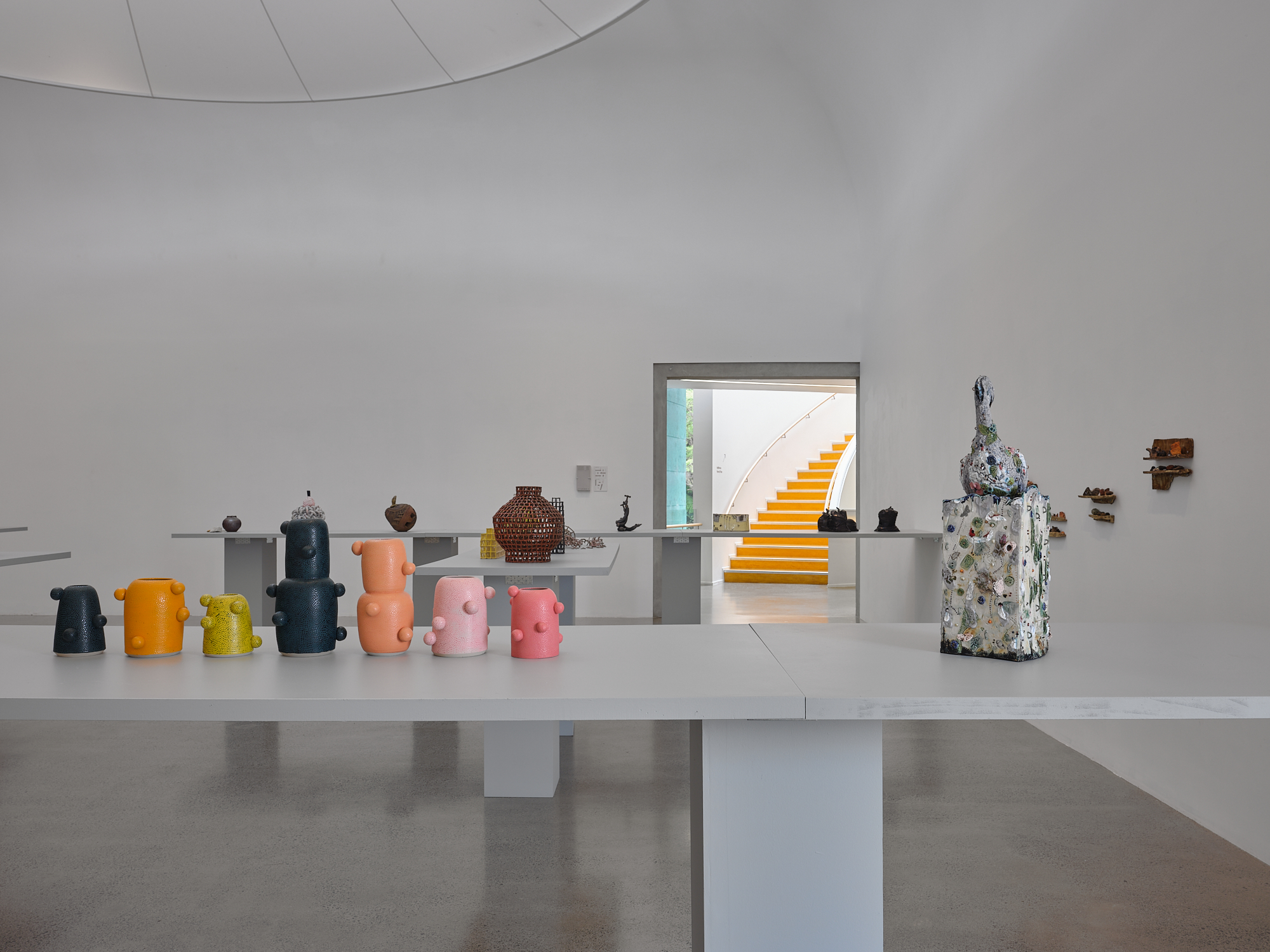
This annual award provides a vital platform to showcase the diversity of contemporary clay practices in Aotearoa. Established in 2001, the Portage Ceramic Awards is a hallmark event for Aotearoa’s ceramics community, showcasing some of the best work currently being made, and serving as a platform for dialogue about developments in the ceramics field.

A heartfelt congratulations to Annie Smith Sandano, whose colourful glazed stoneware works from her ‘Haptic Series’ were included as a finalist in this years awards.

The below image (and the main image at the top of the page) are of the artists works on view with the works of all the Portage Ceramic Award finalists are from the Te Uru website.

From the artist:
I developed my first collection of ceramics in London and Copenhagen in the summer of 2019. The development of this work led to having an installation piece, “Banquet”, selected by Australian ceramicist, Merran Esson, as one of the finalists for the 2019 Portage Ceramic Awards – New Zealand’s most important ceramics award. The piece was also the award catalogue cover and is on show at Te Uru Waitakere Contemporary Gallery in Auckland.
By consolidating hand building, firing and glazing skills and producing a cohesive collection of ceramic works, I was able to expand on my painting practice. In parallel to this, I developed the installation piece, “Banquet”, in which I examined the potential of clay in relation to built surfaces and imagined narratives which prompt visceral engagement.
Simplicity, texture, contrast and block-like features characterise each work. My intention was to also have a strong focus on physicality via surface while pulling on aesthetic referencing from the Brutalist architecture seen around London. Silhouette and mass remaining key to the aesthetic of each piece.
Glazed entirely in a simple gloss white – In keeping with some of the aesthetic rules of Brutalism, the bare building materials are exposed and you can see the colour of the original clay each piece is constructed from along the base of each piece.
Together the ceramic works stand as a tiny city-scape – a suggested brutalist skyline on a domestic-scale. Their functionality is also key so each performs the role of vessel also – sealed inside and out through the vitrification of the glaze, they hold water and are impervious.